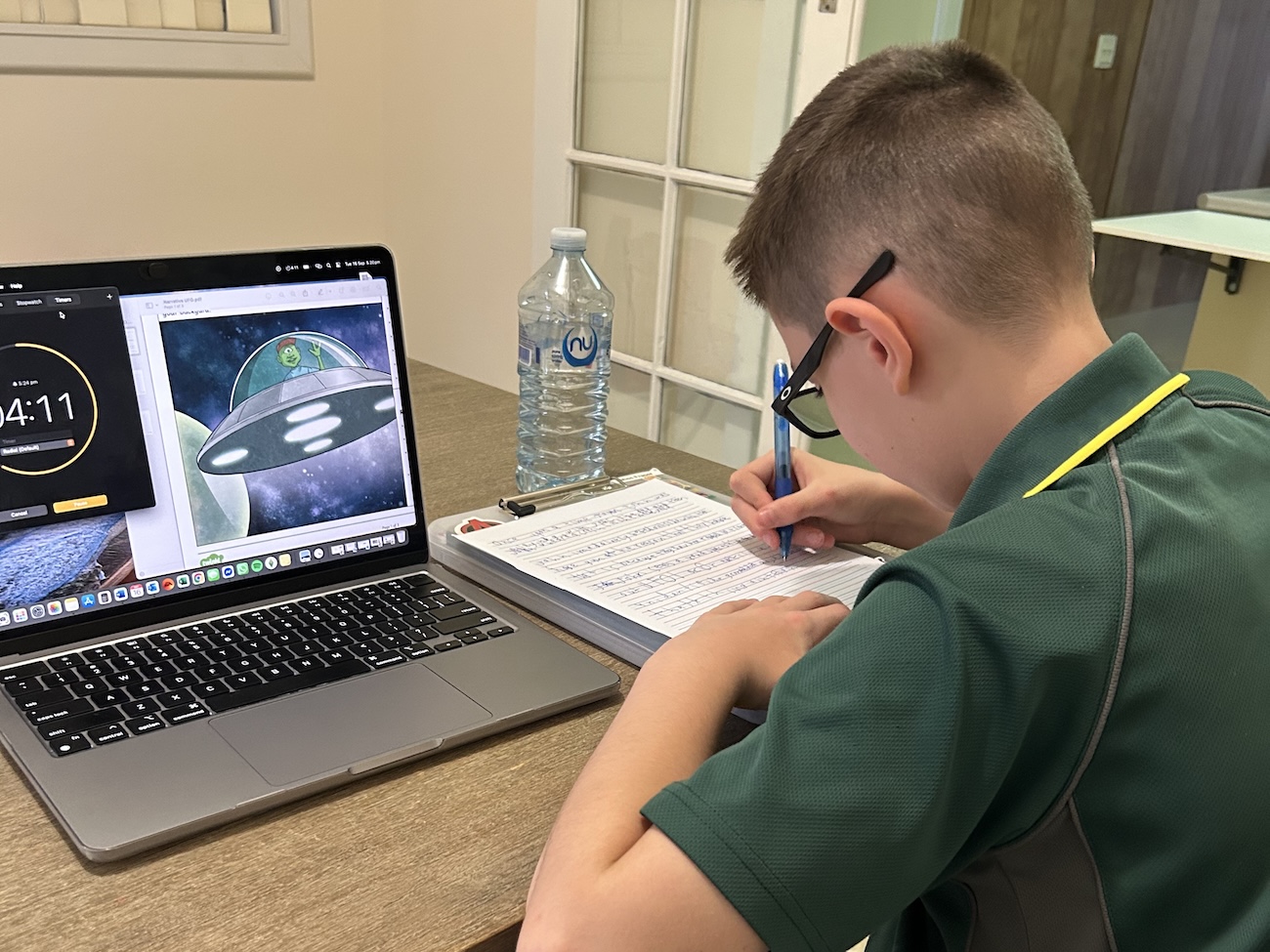Bringing Study tactics into K–6, the right way.
I often tell parents that children differ in every meaningful way. Social confidence, academic capacity, pace, and even the time of day they concentrate best. Because of that, the most helpful study systems are the ones that meet a child at their level rather than forcing a single routine on everyone.
There is, however, a clear through-line. The way memory strengthens is remarkably consistent across ages. Active recall, which is practising pulling ideas from memory, and spaced repetition, which is revisiting ideas over sensible intervals, are hard to beat. We usually ask Years 10 to 12 to use these for the HSC. There is no good reason not to teach the same principles to K–6 in a gentler format.
We are also raising children in a tech-heavy world. iPads and laptops will often win the attention battle. So the question becomes practical. How do we help children study even when motivation is low, and without turning the home into a daily battleground?
At Ascent, our answer is a blend of calm structure and creative delivery. Our tutors design lessons that keep students receptive, and our team supports tutors to adjust for social anxiety and different temperaments. If a memory game or a non-traditional maths activity teaches the same concept more effectively than a worksheet, it is worth using.
How tactics for senior students can be advantageous to primary students
- Active recall becomes short prompts and playful checks: For K–6, recall looks like quick questions, mini whiteboards, and short oral quizzes. Ask first, then check. Keep questions specific at the start, then widen them as confidence grows. The aim is many small wins, not one long struggle.
- Spaced repetition becomes a simple three-pile routine: Use cards or a notebook with three piles. Daily, Every 2–3 days, Weekly. Correct answers move back, tricky ones move forward. Ten minutes is enough. This gives children a sense of progress and teaches them how to plan reviews without the stress of a timetable.
- Interleaving becomes mix and match: Rather than a page of only subtraction, mix two problem types. For example, add and subtract word problems together. Children learn to choose a method, not just repeat one skill. Keep the mix small and clear.
- Define and Diagram: Ask for one clear sentence that explains the idea, then add a tiny labelled picture. Pairing words with a simple visual helps children organise and remember information. This works well for science, HSIE and vocabulary. Keep drawings quick and uncluttered.
Examples
- Science: “Evaporation is when liquid turns into gas” + a small water-cycle sketch with arrows.
- Maths: “One half means two equal parts” + a circle split into two and one part shaded.
- HSIE: “A continent is a large landmass” + a mini world outline with continents labelled.
You’ll find that if you have any children that are in Highschool, students taking any science classes or electives such as Biology or Physics, being able to visualise the content you are learning makes understanding much easier.
When motivation is low
Low motivation is normal, especially with screens nearby. Design for it.
- Start tiny. Two questions first, then decide whether to continue.
- Use a timer the child can see. Short blocks feel safe to start and satisfying to finish.
- Keep setup friction-free. Cards, pencils, and a timer in one container.
- Turn facts into a game. Pairs, odd-one-out, quick charades for key terms.
- Give clear choices. Whiteboard or notebook, easy question first or harder one first. Choice creates buy-in.
A parent-friendly K–6 routine you can start this week
Total time: about 20 minutes, four days a week.
- Warm-up recall, 5 minutes: Ask 3 to 5 questions from yesterday and last week. Child answers first, then checks.
- Memory cards, 6 to 7 minutes: Work through Daily, then Every 2–3 days, then Weekly. Move cards based on success.
- Mix and match, 5 to 6 minutes: Two problem types shuffled together. Aim for accurate method choice, not speed.
- Say and sketch, 2 to 3 minutes: One sentence definition, one tiny labelled drawing.
Calm first, then content
Some children will not learn until they feel safe. We pay attention to this. Predictable starts, clear and short prompts, and steady routines reduce anxiety. If a child is socially hesitant, we build in gentle turn-taking, praise specific effort, and widen questions slowly. If a non-standard activity unlocks understanding, we use it. The goal is learning, not ticking a box.
What this means for parents and teachers
- Bring senior-style strategies into primary school, but shrink the format.
- Focus on habits that will still work in high school. Recall before reading, and reviews that are planned rather than crammed.
- Make study easy to start and easy to repeat. Consistency beats intensity.
Where the Ascent Difference comes in:
- We learn each child’s pace, social comfort, and pressure points.
- We set up a simple study kit. Memory cards for K–6 that mirror classwork, and playful recall prompts the whole family can use.
- We coach tutors to deliver creative lessons that keep students receptive and to adapt on the spot when a concept is not landing.
- We track small wins each week so parents can see progress without guesswork.
If you would like to contact us regarding how we can help adapt this routine into your child’s study environment, feel free to tell us your year level and subjects.
